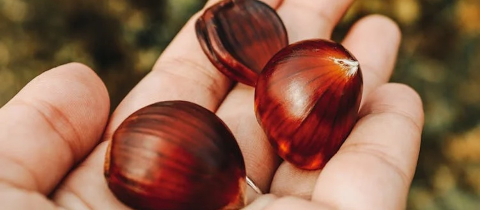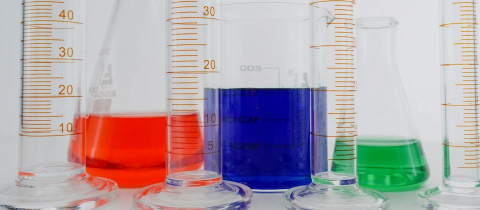Believe it or not, the tasty marshmallows we know are inspired by a plant, a perennial that grows up to about four feet high. Its root has a soft and spongy texture and looks like lung tissue, which led to its use in the treatment of lung conditions. Usually, the root was extracted with hot water, sweetened, aerated, and allowed to cool to form the spongy mass. Crystallization was inhibited because the root contains a high percentage of mucilage, carbohydrates which interfere with crystal formation. Today, some people still use marshmallow tea to soothe inflammation.
The modern marshmallow as we know and enjoy them, however, does not contain any of the plant itself. The trick to making this confection is coming up with an appropriate blend of sugar, syrup, and gelatin. All candy, of course, is based on various sugars and the most important concept a candy maker has is to be familiar with is the relation between the boiling point of a sugar solution and its sugar concentration. Solutions will always have a higher boiling point than pure liquids; so a sugar solution will always boil above 100oC. And the rule of thumb: the more sugar, the higher the boiling point. As the solution is heated, water evaporates and it becomes more and more concentrated. The concentration of sugar in the solution that will determine the final type of candy that forms once the syrup cools. For example, a solution boiled to 113ºC will have about an 85% sugar content by weight and, once cooled, will form into delicious fudge. In the case of marshmallows, the solution is boiled to about 120ºC and then cooled. Corn syrup, with its long chains of glucose preventing sugar molecules from crystallizing, is then added to inhibit any crystallization that might occur. We don’t want any hard nuggets in our marshmallows.
The key to marshmallows, however, is gelatin. Just like the proteins in egg whites, this is a protein that, when beaten, can coagulate. In fact, sometimes marshmallows are made with egg whites. The coagulation takes place at the air-liquid interface as the sugar-protein mixture is whipped allowing the air bubbles that form in the mix to stabilize. When put into hot chocolate, the marshmallow doesn’t really melt, it dissolves. And because sugar is water-soluble, the confection begins to collapse. But as we all know from experience, the marshmallow doesn't dissolve totally. This is due to the coagulated gelatin which is not water-soluble.
If you're one of those that love a good melted marshmallow, then you have to go the traditional route and put it on a stick and into a fire. Now the sugar will melt. In fact, it does more than that. It begins to chemically break apart and produce the delicious smell of caramel. But steer away from eating too many burned marshmallows since the carbonized part contains molecules known as carcinogens. But how often do we really indulge in burnt marshmallows anyway? So enjoy those campfires. And when it comes to the marshmallows in hot chocolate, the only thing we have to worry about is cavities.







